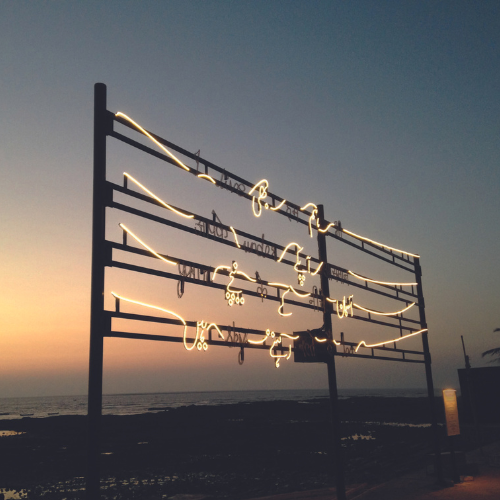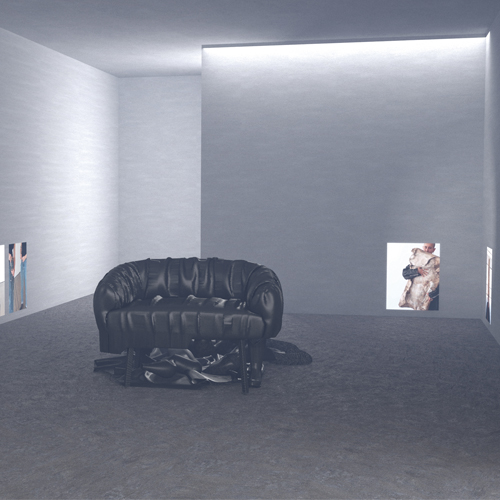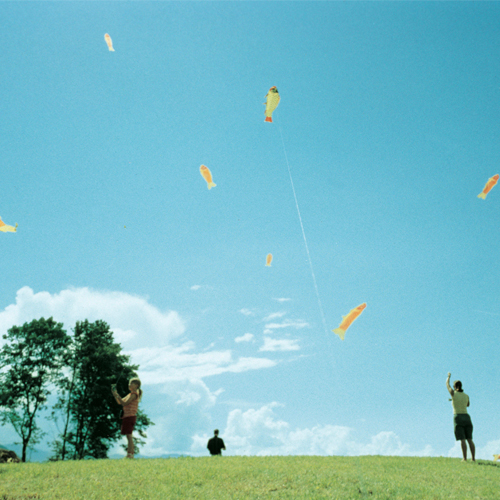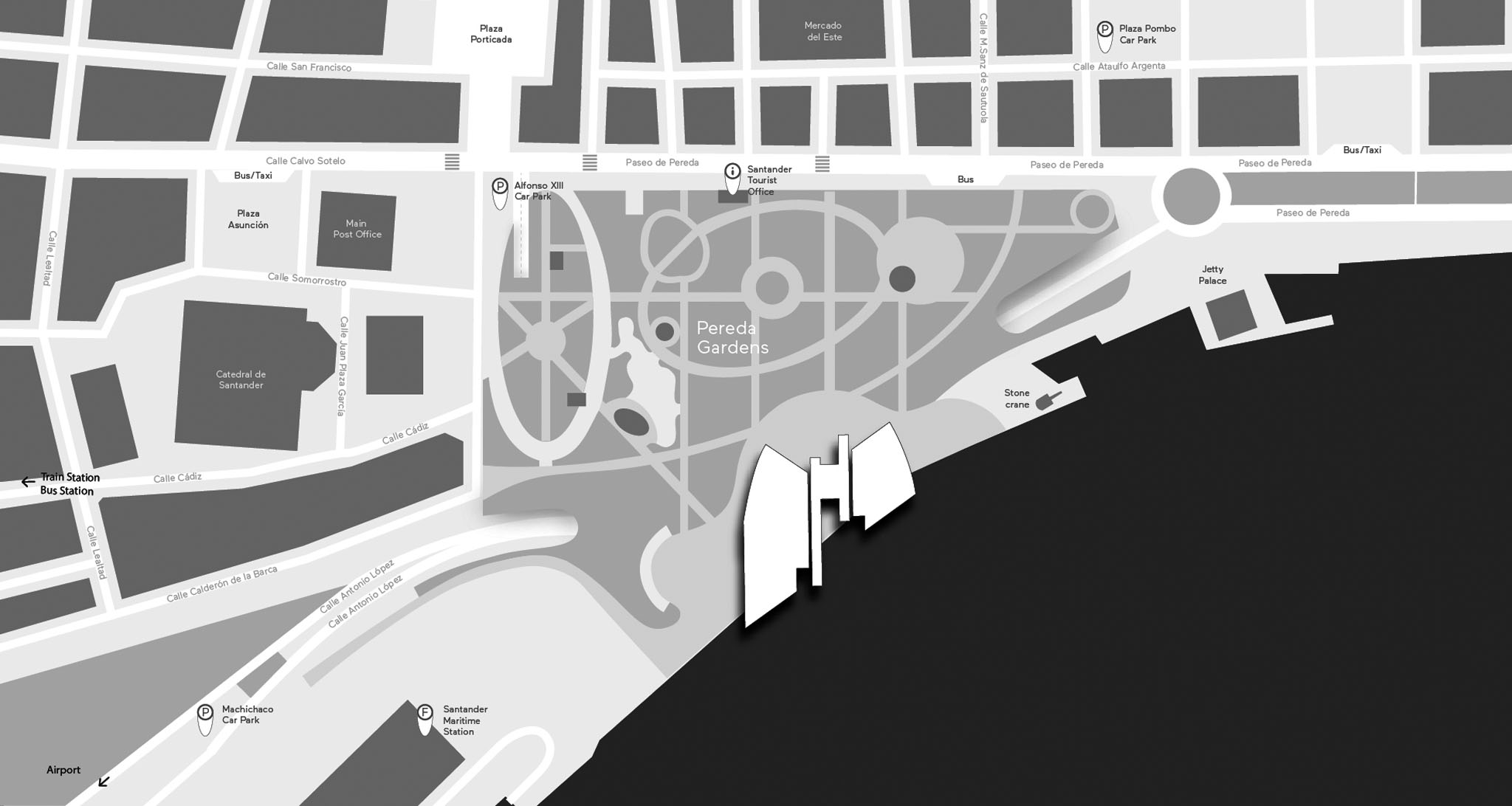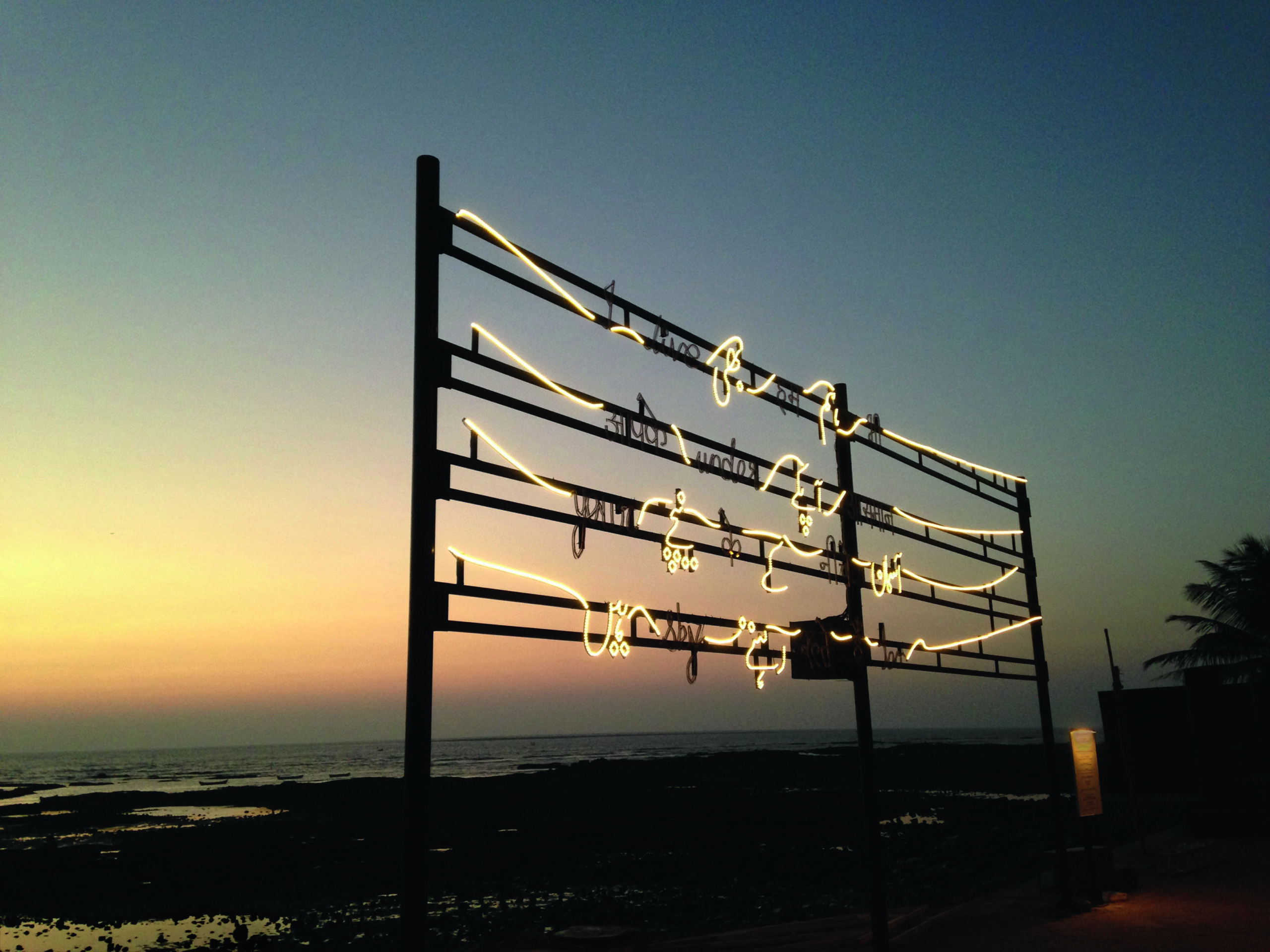
CENTRO BOTÍN PRESENTS THE EXHIBITION ‘I LIVE UNDER YOUR SKY TOO’, BY SHILPA GUPTA
-
-
- The exhibition – Gupta’s first in Spain – on display at Centro Botín from 23 March to 8 September 2024, is an evocative presentation of her most recent work, in which voice and poetry will flood the exhibition hall, to reclaim the existence of those who have been muted and blur the borders that limit the movement of individuals, goods or ideas.
- Centro Botín will feature a new sound installation commissioned for the occasion. Listening Air is a shared listening space in which a set of suspended, rotating microphones will – relay protest songs that have resonated in diverse and faraway landscapes and communities throughout generations.
- With Gupta, Centro Botín inaugurates its 2024 exhibition calendar, which will continue with visual scores by the Swiss artist Silvia Bächli (11 May) and the performative, humorous works of the Japanese artist Shimabuku (5 October).
- Curated by Bárbara Rodríguez Muñoz, Director of Exhibitions and the Collection at Centro Botín, the exhibition will be accompanied by a publication, co-edited with La Fábrica, with texts from art historian and curator Rattanamol Johal, artist and poet María Salgado, the academic Pratap Bhanu Mehta and the curator herself.
- In addition, Gupta in collaboration with Renata Cervetto will lead the next Fundación Botín Art Workshop in Santander, inviting artists and art educators to participate in an intensive initiative – in the style of a residency – where they will live, reflect and create together.
Centro Botín inaugurates its annual exhibition programme with I Live Under Your Sky Too, a solo exhibition dedicated to the renowned Indian artist Shilpa Gupta (Mumbai, 1976). From 23 March to 8 September 2024, visitors can discover this evocative presentation of her most recent work – her first solo show in Spain – where voice and poetry flood the second-floor exhibition hall of Centro Botín to reclaim the existence of those who have been muted and blur the borders that limit the movement of individuals, goods or ideas.
Artist, Shilpa Gupta, said: “The show looks at how we as individuals traverse visible and invisible expectations and impositions. It includes some new works in conversation with works from the past two decades, looking at mobility, persistence and risk of the body and speech”.
Bárbara Rodríguez Muñoz, Director of Exhibitions and the Collection at Centro Botín and curator of this exhibition, said: “Gupta is one of South Asia’s most relevant artists, as much for the growing international profile of her work as for her admirable commitment and integrity. I think it’s important to note how the beauty, generosity and clear intention of her practice go hand in hand with her unwavering pursuit of freedom of expression and movement. For this exhibition, we have selected recent works in which voice and poetry cross borders and generations, inviting visitors to participate in a collective chant of life”.
Silences and absences derived from censure and isolation are ever-present concerns in the artist’s work. For that reason, she works with the written, sung or spoken word as a place for resistance, visibility and empathy, something apparent in I live under your sky too an LED light installation with the phrase of the show’s title – written in English, Spanish and Urdu – that reminds us that this exhibition sets a clear intention of being present.
The political context of South Asia, where the artist grew up, a place with constant social, territorial and border disputes, has clearly influenced her constant return to borders and how they have enormous consequences on the lives and freedom of a civil population. As such, we can understand her work as an exercise in crossing, blurring and finally dissolving these limits from the national and ideological to the imagined. Gupta’s insistence on filling empty spaces with voices from diverse communities and in numerous languages is a natural consequence of her life in Mumbai, in an extraordinarily multicultural and polyphonic environment, immersed in a sea of languages, religions, cultures and beliefs. This daily experience translates into a body of work that links us with the unknown, with the unfamiliar, with languages that we do not understand but that, even so, can penetrate our unconscious.
Thus, the exhibition’s central work is a shared listening space titled Listening Air (2019-2024), commissioned for the show by Fundación Botín. In it, a set of suspended, rotating microphones relay voices from several historically oppressed communities, making audible the words that have resonated in faraway and diverse countries, connecting rice fields, forests, streets and universities from different parts of the world. The work includes, ‘Bella Ciao’, which has travelled from the women rice weeders of the Po Valley in Italy in the 1940’s, to the farmers sit down protest in New Delhi in 2020. ‘We Shall Overcome’, a folk and labor song which has journeyed through South Carolina in the United States, sung by tobacco farm workers, onto the streets during the civil rights movement, further onto Beijing´s Tiananmen Square, and beyond. ‘Hum Dekhenge’, penned by poet Faiz Ahmed Faiz in 1979 in Pakistan, transcended borders, echoing on Indian university campuses, serving as a symbol of hope during recent political unrest. ‘No Nos Moverán’ which originated as a spiritual of the enslaved Africans in the Southern United States, a cry for freedom that traversed decades to become one of the first chants in response to the 1973 coup d’état in Chile and crossed the Atlantic to be sang during students and workers protests in Spain until now. The perception of language and the song become a shared physical experience in which the visitor forms part of the installation’s choreography, experiencing and reacting to the recorded voices.
Visiting the exhibition
The first thing the visitors encounter upon entering the exhibition space is Untitled (2018-2024), a series of subtle tracings on paper that mark the curves of different bodies with the voids left by others as if they had vanished, highlighting their absences and making them more poignant. It consists of poets including Italy, Russia, Turkey, China, Azerbaijan, Nigeria, India, Pakistan, Myanmar and Korea who, throughout history, have been imprisoned for what they have said or written. The drawings are framed in fragile wooden bars and are accompanied by verses taken from their poems. These drawings form part of an immense transhistorical and transcultural research project about poetry and repression, which, in this exhibition, is also manifested in a series of pieces made from everyday materials: A household vitrine displays a series of glass apothecary bottles whose tags contain censored verses of poetry and, inside, the invisible breath of the same verses whispered by the artist (Untitled, Spoken Poem in a Bottle, 2021-2024); a fragile and ominous tower of 21 pencil points on a wooden pedestal (Tower of Broken Pencils, 2021) notes the persistence of the poet’s work despite the violence against their instruments; a small, wedge-shaped portion of a clock cast in gunmetal (Visitor Hours, 2021) alludes to the material time allotted in prisons to outside visitors.
The body – absent, fragmented and alluded to – is presented across the exhibition hall in several works of transcendent beauty that are subtle and modest in their means. As is typical in the artist’s constant exploration of human expression, approaching them provokes tension in our body and penetrates our psyche. A clear example of this is Untitled, Distance Between Two Tears (2021), an aluminium rod marking the distance between two of the artist’s pupils; or in A Liquid, the Mouth Froze (2018), a gunmetal sculpture cast in the shape of the negative of the inside of an open mouth; also in Untitled (2021-2023), a series of black pedestals, of different heights, also cast in gunmetal, alludes to the possibility of rising (above them) and seeing other horizons. The hall also holds wax sheets of indeterminate shapes (Body Cast, 2023) that occupy the space of the artist’s own body, a body in negative that has been flattened, divided and stacked.
Through the exhibition, we can understand Gupta’s work as an exercise in crossing, blurring and, finally, dissolving national, ideological and even imagined borders. In 100 Hand Drawn Maps of Spain (2024), a piece specifically produced for this exhibition, 100 people from different Spanish cities (Santander, San Sebastián and Barcelona, among others) have sketched the outline of the map of Spain from memory in the pages of a book, sheets of paper that are then blown by a fan, illustrating how political borders are constructed and learned. Along those same lines, Stars on Flags of the World (2024) is a textile embroidered with stars for all of the world’s countries, both internationally recognized and not. Some stars have slipped off their original flags and lay atop others, evoking the fluidity of people and identities.
The exhibition ends with StillTheyKnowNotWhatIDream (2021), an analogue board with mobile panels like those found in train stations and airports to announce the arrivals and departures of trains and planes and that, on this occasion, rhythmically generates a series of brief phrases written by the artist. Floating between the coherent and the incoherent, the personal and the social, the words intertwine and fragment (errors included), opening themselves to the infinite emotional conjectures of the human experience.
This exhibition will be accompanied by a publication, co-edited with La Fábrica, that includes texts written specifically for this project by the art historian Rattanamol Johan, the artist and poet María Salgado, the academic Pratap Bhanu Mehta and the show’s curator, Bárbara Rodriguez Muñoz. Additionally, before the opening, Gupta will invite artists and art educators to participate in the Fundación Botín Art Workshop that she will lead in Santander as a foreword to her exhibition. Designed in collaboration with art historian and curator Renata Cervetto, the artist has conceived it as a space for reflection and experimentation on new pedagogies and education, all as a fundamental tool of artistic expression and social compromise.
*Access a selection of works that will be part of this exhibition in the Gallery of the website by clicking HERE.
Previous registration HERE.
-

